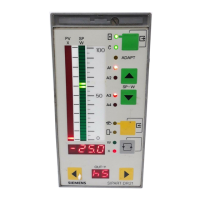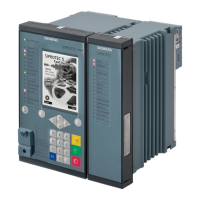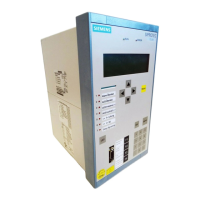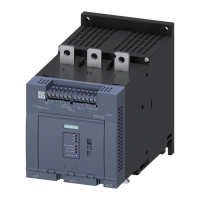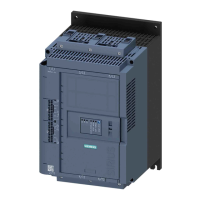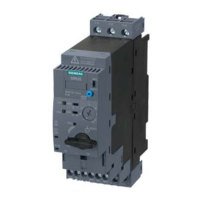2 Installation
2.2 Electrical Connection
Manual
108
SIP ART DR24 6DR2410
C79000-G7476-C153-03
!
W ARNING
Disconnection of the PE conductor while the controller is powered up
can make the controller potentially dangerous. Disconnection of the PE
conductor is prohibited.
D Power supply connection
The power supply is connected on 115 V or 230 V AC systems by a three--pin plug
IEC 320/V DIN 49457 A , on 24 V UC systems by a special 2--pin plug (polarity irrelevant).
The plugs are supplied with the unit.
!
W ARNING
Set the mains voltage selection switch (see figure 2-1, page 109) in the
no--voltage state to the existing mains voltage.
It is essential to observe the mains voltage specified on the rating plate
or on the mains voltage switch (115/230 V AC) or on the voltage plate
(24 V DC)!
Feed the power cables via a circuit breaker within easy reach (fire safety
according to IEC 66E (sec) 22/DIN VDE 0411 Part 100). When
connected to an unprotected power supply, the controller must be
supplied via a circuit breaker. The circuit breaker is not required if one
already exists (≤ 30 V rms or ≤ 42,4 V DC and current ≤ 8 A or source
under all load conditions ≤ 150 VA or fuse element which responds at
≤ 150VA).
The circuit breaker can be omitted if the 24 V UC power supply unit is
protected by ≤ 4 A (35 V DC) (slow-blow 3.15 A is required at least).
D Connection of measuring and signal lines
The process signals are connected via plug--in terminal blocks that can accommodate
cables of up to 1.5 mm
2
(A WG 14) cross--section.
Standard controller Slot 1 14 and 10--pin
Option modules Slots 2 and 3 4--pin
Slot 5 and 6 5 and 6--pin
Interface relays “Slots” 7 and 8 3 and 6--pin
The slots 1 to 8 must be marked in the circuit diagrams and at the terminal blocks.
Signal lines should be laid separately from power cables to avoid the risk of interference
couplings. If this is not possible, or -- due to the type of installation -- the controller may not
function properly as a result of interference on the signal lines, the signal lines must be
screened. The screen must be connected to the PE conductor of the controller or one of the
ground connections, depending on the fault source’s reference point. The screen should al-
ways only be connected to one side of the controller when it is connected to the PE conduc-
tor to prevent creation of a ground loop.
